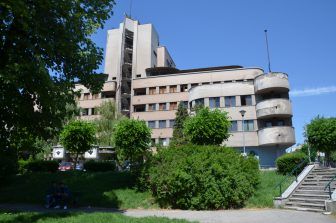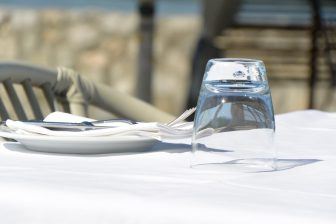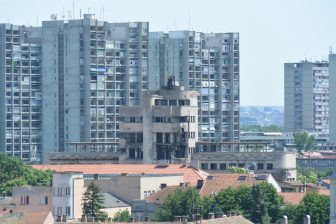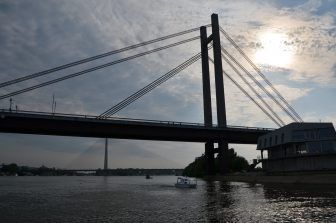
[ May 2018 ] On the next day, we joined a tour to Zemun, a historic part of Belgrade in Serbia.
We joined many tours during our short holiday in Serbia, which was good in a way because we learned a lot of things, but on the other hand, we did not have enough time to do nothing and relax, which I regret.
Anyway, the tour on the day started from the Republic Square near our hotel.
We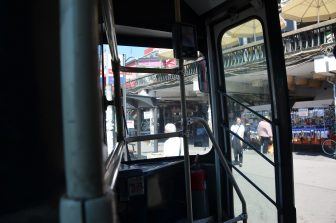 were the only ones to do this tour, so it became our private tour.
were the only ones to do this tour, so it became our private tour.
This time, too, the guide was a young woman and her name was Marge (that’s what I heard, but it might be slightly different).
Zemun used to be a separate town in the past, as we learned during our walking tour on the first day, but now it is a part of Belgrade and it is situated on the other side of the Danube River.
We took a local bus to get there.
There is a prepaid card for public transport in Belgrade and, if you use this card, the bus ride costs 90 dinars (£0.67, €0.76, $0.89) for 90 minutes.
If you pay directly to the bus driver, one ride costs 150 dinars.
Marge let us use her card.
By the way, on the way back, we were on our own and we wanted to pay the driver 300 dinars for two, but for some reason he gestured that we did not need to pay, though we had prepared the exact money.
We got off the bus at one point in the busy main road and then walked to the quiet park.
According to Marge, Zemun was occupied by Ottoman Turkey in the 15th century, but became a part of the Austrian Empire in the 17th century.
Belgrade, on the other hand, was under Turkish rule until the 19th century, so for the 2 centuries, they were different countries, facing each other across the river.
Because of this background, the residents of Zemun have always had a sense of superiority over the people of Belgrade.
We looked at the Aviation Building, which was the first building they built after Zemun became a part of Belgrade in 1934.
It was the social gathering place for air force related people.
If you look at the building from above, it is shaped as an aeroplane.
The height of the tower is 36 meters and that was the highest in the city when it was built.
Unfortunately, it was bombed during the 1999 Nato raid and got severely damaged.
The building has been left as it was then.
We 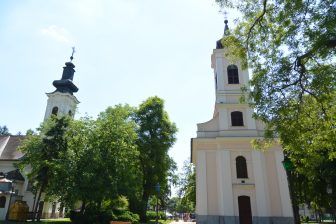
In the past, this area was a checkpoint, like Ellis Island in New York.
They checked every single person who came from the Turkish area to discern whether or not they had any diseases.
It took as long as 7 weeks for one person’s examination.
If something wrong was found, they were sent to a wooden hut on the river to get treatment and after that, they had to have an examination for another 7 weeks.
Even the people in charge of checking the goods from Turkey had to have this 7 week check, too.
The proof that they had passed the examinations was the passport, for the people to continue on.
The Catholic church here is closed most of the time like the one we saw in Novi Sad the day before.
When Yugoslavia was collapsed, most of the Catholic believers moved to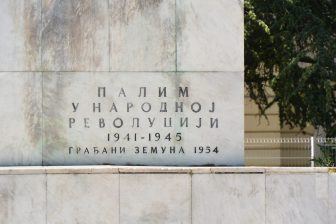
“Until then, we all lived together peacefully” Marge said.
We also saw the war memorial for WW2.
According to Marge, WW2 was fought between the royalists who stood with Nazi Germany and the partisans, including Tito in this country, so it was a civil war.

